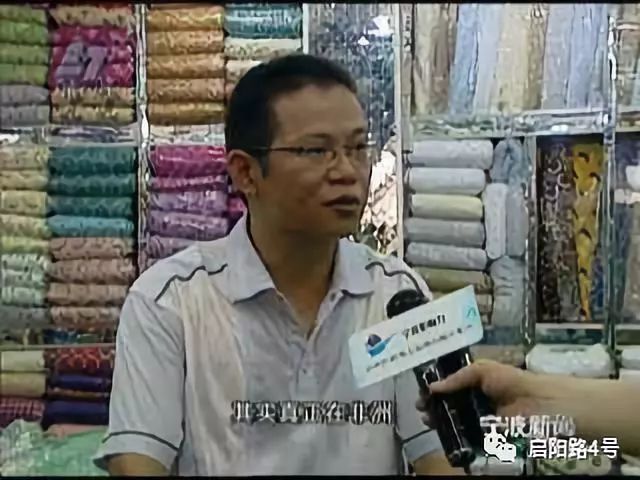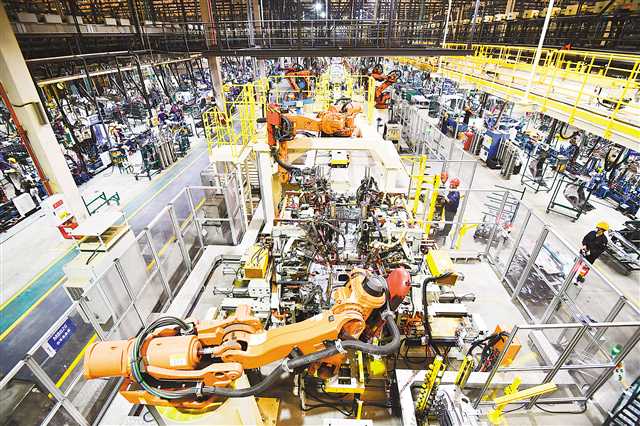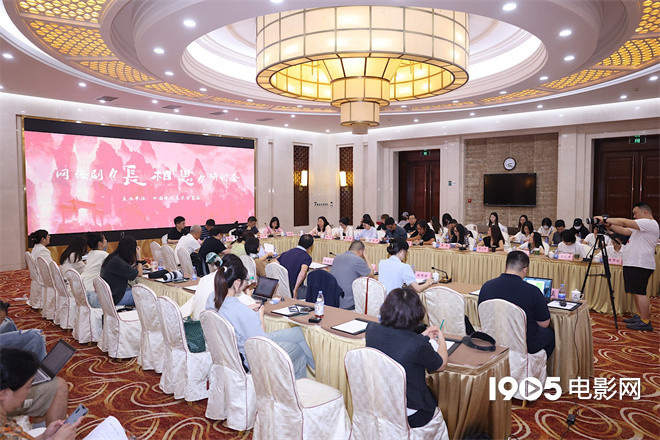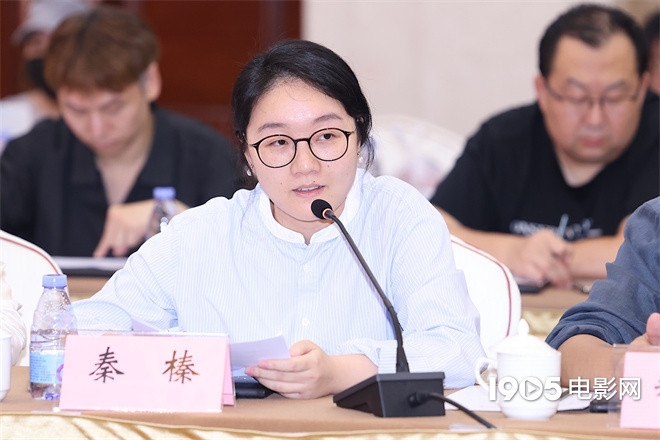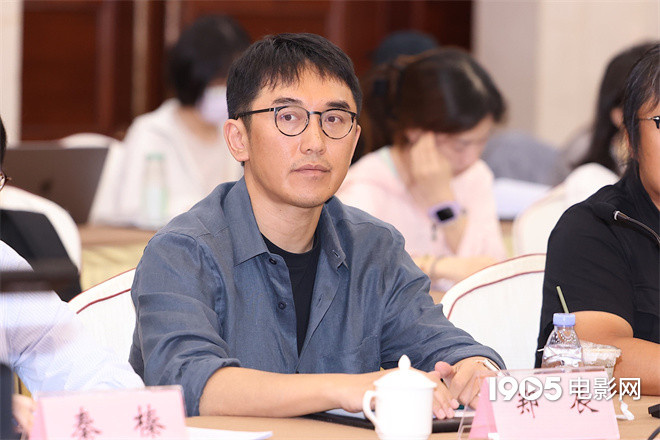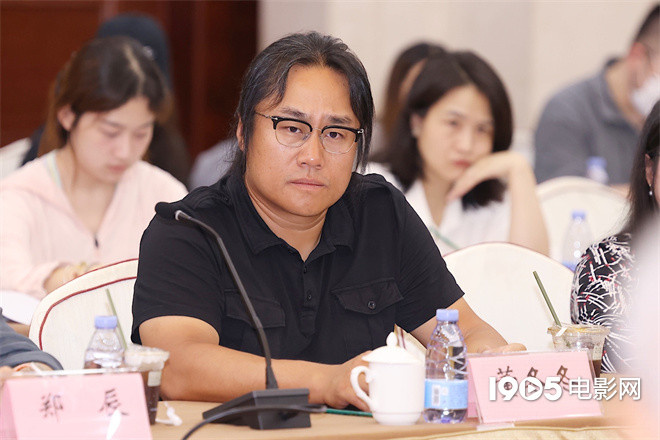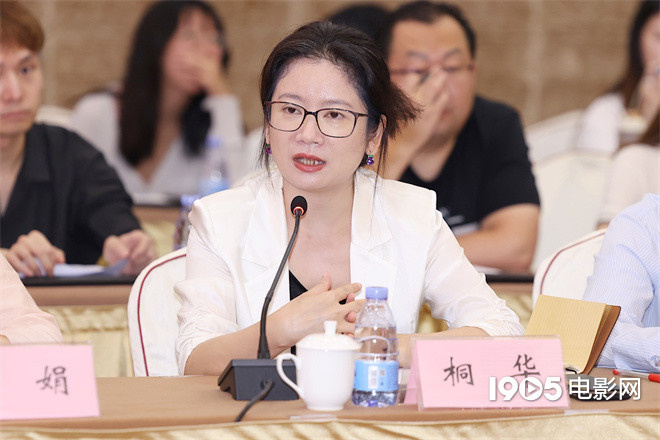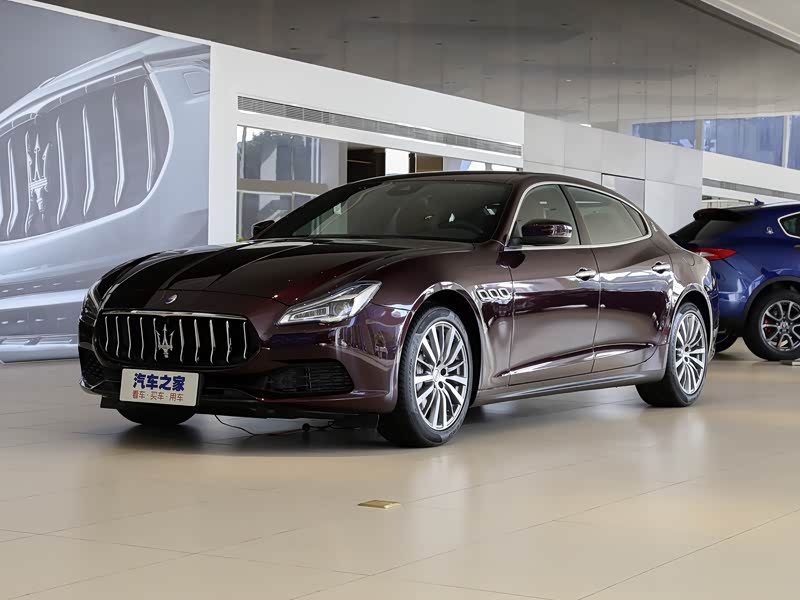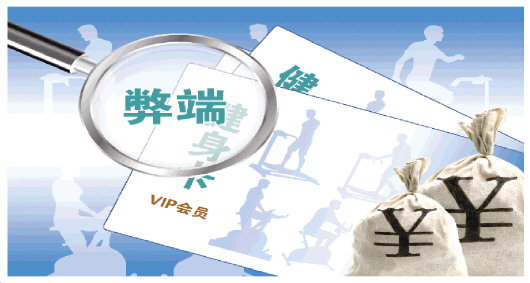[Introduction to the author]Professor of China University of Political Science and Law, doctoral supervisor, mainly engaged in criminal procedure law research; Associate Professor, Doctor of Law, China University of Political Science and Law.
[article source]China Judicial Appraisal, No.3, 2015
[executive summary]Deepening the reform of judicial expertise system is an important content of comprehensively promoting the rule of law and deepening the reform of judicial system. However, at present, the management of the judicial expertise system still restricts the further development of the unified management system of judicial expertise, such as the business scope of the appraisal institutions in the investigation organs and the roster management of the judicial organs. In terms of the implementation procedure of judicial expertise, the problems related to the entrustment and acceptance of judicial expertise, the technical standards and specifications adopted, and the expert responsibility system are still outstanding; In the aspect of litigation procedure, the problems related to the initiation, cross-examination and re-appraisal of judicial expertise have not been well solved. This means that there is still a big obstacle to the development of the unified, standardized and fair judicial expertise system in China, and it is necessary to further improve the unified judicial expertise management system, the standardized judicial expertise implementation procedures and the fair judicial expertise litigation procedures.
[Keywords:]Judicial expertise, expertise management, expertise implementation procedures, expertise litigation procedures
Judicial expertise is not only an important part of the judicial system, but also a judicial guarantee system. Judicial expertise serves litigation activities and provides scientific and technical guarantee for fair justice. Its perfection is directly related to the realization of judicial justice, so it has always been the focus of judicial reform. The Decision of the Central Committee of the Communist Party of China on Comprehensively Deepening the Reform and the Decision of the Central Committee of the Communist Party of China on Comprehensively Promoting the Rule of Law adopted by the Third Plenary Session and the Fourth Plenary Session of the 18th CPC Central Committee require deepening the reform of the judicial system, improving the unified judicial expertise management system, speeding up the construction of a fair, efficient and authoritative socialist judicial system, and making the people feel fair and just in every judicial case. Based on the main problems encountered in the reform of judicial expertise system in recent years, this paper puts forward some ideas to improve the judicial expertise system under the background of comprehensively promoting the rule of law. In view of the fact that the reform of judicial expertise system needs the overall promotion and coordination of litigation system, evidence system and administrative management system, this paper discusses it from three aspects: unified management of judicial expertise, implementation procedure of judicial expertise and litigation procedure of judicial expertise.
A sound and unified management system of judicial expertise
There have been two major drawbacks in the management of judicial expertise in China: first, the establishment of judicial expertise institutions is chaotic; Second, the practice management of judicial authentication institutions is decentralized, which leads to repeated authentication and multiple authentication. Faced with many appraisal opinions with different conclusions, the public security and judicial organs generally tend to trust and adopt the appraisal opinions issued by the appraisal institutions within their own organs, which leads to the problems of "self-investigation and self-examination, self-inspection and self-examination", and the neutrality of the appraisal institutions or appraisers is questioned. In order to solve these problems, the Ministry of Justice has successively issued a series of ministerial regulations or normative documents, including the Measures for the Administration of Registration of Judicial Appraisal Institutions, the Measures for the Administration of Judicial Appraisers, the Provisions on the Classification of Judicial Appraisal Practices (Provisional) and the Provisions on the Administration of Judicial Appraisal Licenses. In 2002, the Supreme People’s Court also issued the Interim Measures for Judicial Expertise of People’s Courts and the Administrative Measures for Entrusting and Organizing Judicial Expertise of People’s Courts, which made corresponding provisions on the management of judicial expertise institutions and personnel of people’s courts. Although these reform measures have improved the management order of judicial expertise, on the whole, they have little effect.
In order to solve the outstanding problems in the practice of judicial expertise, such as unified management, socialization of appraisal institutions and neutrality of appraisers, on February 28th, 2005, the National People’s Congress Standing Committee (NPCSC) adopted the Decision on the Management of Judicial Expertise (hereinafter referred to as the Decision), which became an important legal basis for the management of judicial expertise. The "Decision" first focuses on solving the problem of the independence of the appraisal institutions, excluding the situation that the investigation organs are entrusted by the society to engage in appraisal services and the people’s courts and judicial administrative departments set up appraisal institutions themselves, and puts the appraisal institutions in a more neutral position that is not attached to any judicial organs or administrative organs. More importantly, the "Decision" establishes a unified management system of judicial expertise: the judicial administrative department has the right to conduct examination and registration management of social expertise institutions applied for by legal persons or other organizations, and to conduct filing and registration management of appraisal institutions of investigation organs. It can be said that the "Decision" is mainly devoted to the unified management of judicial expertise, that is, the judicial administrative organs should achieve the unification of registration, qualification, training, appraisal standards, fees and penalties for violations, and so on. However, in practice, the unified judicial expertise management system is far from being formed, and the judicial expertise management order is still chaotic.
1.1 The rejection and breakthrough of the unified management of judicial expertise by the investigation organs and appraisal institutions.
According to the provisions of Article 7 of the Decision, the establishment of an authentication institution by the investigation organ is not only restricted by the needs of investigation, but also the authentication institution "may not accept the entrustment of the society to engage in judicial authentication business". However, the the National People’s Congress Standing Committee (NPCSC) Law Commission affirmed whether the investigation organs can entrust each other and whether the investigation organs can accept the entrustment of the judicial organs to engage in the judicial expertise business, which opened the door for the expansion of the service scope of the authentication institutions of the investigation organs. In view of this reality, the Central Political and Legal Committee turned to require the management mode of combining the direct management of the subordinate departments with the filing and registration of the judicial administrative department for the appraisal institutions and appraisers belonging to the investigation organs [2]. In judicial practice, some investigation organs authorize their appraisal institutions to conduct appraisal business "externally" to the society, thus breaking through the restriction of "not accepting entrustment to engage in judicial appraisal business for the society" in the Decision, so that the reality has not changed much before the reform, and the reform goal of neutrality of appraisal institutions has basically failed.
1.2 The judicial organs’ erosion and division of the management right of judicial expertise
The biggest progress of the Decision lies in the abolition of the appraisal institutions of judicial organs, and the complete realization of the "separation of trial and appraisal" necessary for judicial justice. By cutting off the connection between the judicial organs and the appraisal institutions, the Decision aims to ensure the neutrality of the court and reduce the inevitable doubts of the parties about the appraisal opinions because of the court’s "self-examination and self-examination". However, due to the traditional concept that the appraisal institution has long been an internal institution of the court and the appraiser has long regarded himself as a judge’s assistant, the interest relationship between the judicial organ, the appraisal institution and the appraiser is still broken and even alienated under the influence of the original power inertia. In practice, some local courts are not willing to lose the right to administer judicial expertise. On the basis of the register management of judicial administrative departments, they register and manage the appraisal matters within the "three categories" stipulated in the Decision, and register and manage the appraisal matters beyond the "three categories" that require the Ministry of Justice to consult the Supreme People’s Court and the Supreme People’s Procuratorate. This practice of selecting and compiling from the roster compiled by the judicial administrative department or outside the roster leads to the mixed management of the roster registration of authentication institutions by the judicial organs and the judicial administrative department, and the judicial organs actually divide the judicial authentication management power of the judicial administrative departments. Some local courts even went beyond the judicial administrative department to register some authentication institutions, resulting in confusion in the management order of judicial authentication, disorderly operation of judicial authentication institutions and unfair competition in the field of judicial authentication.
1.3 Social judicial authentication institutions "non-litigation authentication" and "authentication consultation" disorderly operation.
Before the promulgation of "Decision", the multi-head identification and repeated identification caused by the confusion of judicial expertise system was one of the difficult problems in the reform of judicial expertise. After the reform of the judicial expertise system, although the legislative progress has not been fully realized, compared with before the reform, the judicial expertise management has gradually entered the track of rule of law, science and standardization, which is mainly reflected in the unified management of social judicial expertise institutions by the judicial administrative department and the improvement of the appraisal management order. However, in addition to providing judicial expertise services, social judicial expertise institutions also engage in a large number of "non-litigation expertise" or "expertise consultation". "Non-litigation appraisal" refers to law enforcement appraisal that does not directly aim at litigation, such as arbitration appraisal, technical appraisal of traffic accidents, technical appraisal of disputes between doctors and patients, and technical appraisal involving violations of party discipline and political discipline. The scope of "appraisal consultation" is wide, and there are three main situations: "pre-litigation appraisal", "out-of-litigation appraisal" and "appraisal entity consultation". According to the investigation and analysis of some scholars, "the proportion of improper control of litigation appraisal affects the appraisal order is small, while the proportion of repeated appraisal, multi-head appraisal and disputes over appraisal opinions caused by non-litigation appraisal and appraisal consultation is large." {2} "This shows that the" non-litigation appraisal "or" appraisal consultation "of social judicial appraisal institutions is the main source of the current disorder of appraisal. Therefore, in order to improve the management of social judicial authentication institutions, the judicial authentication management department should focus on standardizing its non-judicial authentication activities of "serving the society". "Non-litigation appraisal" must be accepted according to law,The procedures and results of issuing expert opinions should be distinguished from judicial expertise. "Appraisal consultation" should be cautious, not "ask for advice". "Pre-litigation appraisal" should be strictly implemented in accordance with local regulations or the relevant provisions of the General Rules of Judicial Appraisal Procedure of the Ministry of Justice, and the entrustment of appraisal for unknown purposes and violation of social morality should be rejected; Consultation on appraisal entities should be handled with caution, and irresponsible or controversial advice should not be provided. Legislation on expert consultation should also be followed up, so that judicial expertise management can be based on laws.
To sum up, the biggest problem facing the current judicial expertise management is that the unified judicial expertise management system established by the Decision has not really formed. At the same time, new problems in the management of judicial expertise, such as how to manage non-judicial expertise in social judicial expertise institutions, lack corresponding legislative norms. Under the background of comprehensively promoting the rule of law and deepening the reform of judicial administration, judicial administrative organs should seize the opportunity to further implement and improve the unified judicial expertise management system, so as to truly improve the judicial expertise order. In addition to further implementing the unified management system of judicial expertise, the following reforms must be carried out.
1.3.1 Improve the access and management of appraisers.
Judicial appraiser is the main body to carry out appraisal, and is a natural person who uses specialized knowledge and technical methods to solve specialized problems in litigation activities. Judicial appraisers have the dual attributes of scientific and technical workers and legal workers, and they should have the necessary legal knowledge in addition to the corresponding professional knowledge. In addition, judicial appraisers must have good legal professional ethics and the scientific spirit of seeking truth from facts, which is the premise to ensure the objectivity and fairness of expert opinions. In some appraisals with many subjective factors (such as forensic psychiatric appraisal), the appraiser should also have considerable years of practice experience.
For a long time in China, there is a lack of uniform professional standards and qualifications for judicial appraisers, and there is a lack of necessary practice assessment methods. The author thinks that we can learn from the appraiser roster system in civil law countries, establish a unified professional qualification system for judicial appraisers, and strive to improve the professionalism and specialization level of judicial appraisers: (1) establish a unified professional qualification system for judicial appraisers that combines professional qualification examination and qualification identification; (2) Organize unified special training for judicial appraisers before taking up their posts and transferring their posts; (3) Establish a unified management system for the practice of judicial appraisers; (4) Improve the supervision system of qualification evaluation; (5) Implementing a unified and lifelong continuing education system; (6) Implement a unified practice inspection and registration system {3}.
1.3.2 Give full play to the positive role of trade associations.
Because judicial expertise involves many industries, it is not enough to rely solely on the administrative management of judicial administrative organs, but also to play the role of self-discipline management of trade associations. Judicial expertise industry associations can organize experts to formulate judicial expertise operating rules, technical specifications and standards, judicial expertise institutions’ qualification evaluation standards, and judicial expertise quality and integrity assessment methods, and can also assist judicial administrative organs in supervision and management; Safeguard the legitimate rights and interests of judicial authenticators and judicial authentication institutions; To supervise and inspect the professional ethics and practice discipline of judicial authentication institutions and judicial authenticators, and reward and punish them; Organize members to carry out continuing education and training, and form a mode of combining unified management of judicial administrative organs with self-discipline management of trade associations.
1.3.3 Improve the practice responsibility system of judicial expertise.
While improving the practice environment, maintaining the appraisal order and providing the practice guarantee, we should further improve the practice responsibility system. The Decision stipulates two kinds of legal responsibilities: administrative responsibility and criminal responsibility. Some scholars suggest that the provisions on civil liability should be added. When an appraiser makes a wrong appraisal due to intentional or gross negligence, the client may apply for damages, and the appraisal institution and appraiser shall be jointly and severally liable for this.
2. Improve and standardize the implementation procedures of judicial expertise.
The Central Political and Legal Work Conference held in January, 2014 put forward the requirement of "improving the unified and authoritative judicial expertise system", indicating that besides the unified judicial expertise management system, it is also necessary to ensure that the results of judicial expertise are authoritative and can effectively guarantee judicial justice. The authority of judicial expertise results depends on the standardization and fairness of the expertise procedure. In view of the fact that judicial expertise is a highly unified activity of science and law, it should be carried out in strict accordance with scientific laws and the relevant provisions of the law, and its procedures can also be divided into two aspects: the implementation procedure of judicial expertise and the litigation procedure of judicial expertise. Therefore, in order to establish an authoritative judicial expertise system, it is necessary to take a two-pronged approach, not only to standardize the implementation procedures of expertise, but also to improve the fair judicial expertise litigation procedures. The author will discuss these two issues in turn in the following.
In order to further realize the standardization, institutionalization and scientificization of judicial expertise activities, the Ministry of Justice promulgated the newly formulated General Principles of Judicial Expertise Procedure (hereinafter referred to as the General Principles) on August 7, 2007 to replace the General Principles of Judicial Expertise Procedure (for Trial Implementation) issued by the Ministry of Justice on August 31, 2001, which is another important achievement in the reform of judicial expertise system. First of all, the biggest deficiency of the National People’s Congress Standing Committee (NPCSC) Decision in 2005 is the lack of provisions related to the implementation procedures of judicial expertise. The promulgation of the General Principles just makes up for the lack of norms in this field. Secondly, the "General Principles" follow the inherent laws of judicial expertise activities, and clearly stipulate the entrustment and acceptance of judicial expertise, the implementation of judicial expertise, the technical standards and specifications that judicial expertise should follow, and the special provisions of judicial expertise procedures in accordance with the workflow of judicial expertise activities {4}. Thirdly, based on the Decision, the General Principles further implemented the responsibility system of judicial appraisers, strengthened the supervision responsibility of judicial appraisal institutions, and standardized the acceptance conditions of re-appraisal, which not only implemented the principles of the Decision, but also partially solved the problems left over by the Decision, and complemented and promoted each other with the Decision, becoming an important legal document for adjusting judicial appraisal activities.
(1) The General Principles clearly stipulates the obligations of judicial appraisers, thus further implementing the responsibility system of judicial appraisers. Judicial appraisers use science and technology and expertise to independently identify and judge the specialized issues involved in litigation, and are responsible for their own expert opinions, which is the core content of the judicial appraiser responsibility system established in the Decision [3]. The General Principles put this principle into practice through a series of obligations and system designs. For example, it is stipulated that judicial appraisers should abide by the obligations of confidentiality, avoidance, testifying in court and independently issue expert opinions; Consulting relevant experts on complex, difficult and special technical issues, the final expert opinion shall still be issued by the judicial appraiser of this institution; If there are different opinions on the appraisal opinions in the judicial appraisal attended by many people, it shall be indicated, etc.
(2) The "General Principles" provide a guarantee for improving the quality of identification by strengthening the supervision responsibility of judicial authentication institutions to the judicial appraisers of their own institutions. According to the provisions of the General Principles, judicial authentication institutions have the right to examine and accept the entrustment of authentication according to law; Assign judicial appraisers, and supervise judicial appraisers to abide by legal obligations, professional ethics and practice discipline, technical specifications and appraisal time limit; Supervise the use and storage of judicial authentication materials; Unified collection of judicial expertise fees; To urge judicial appraisers to testify in court according to law and implement the system of withdrawal of appraisers; Organize expert consultation and multi-agency appraisal; Organize review and correct violations. The above provisions enable judicial authentication institutions to play a subjective role in organizing, managing and supervising the authentication activities of judicial authenticators. These regulations further urge judicial appraisers to become the real subject of appraisal, while appraisal institutions gradually retreat to the position of supervision and management. Unlike the Decision, which emphasizes the unified (macro) management of the appraisers by the judicial administrative organs, the General Principles emphasizes the supervision of the appraisers at the micro level, which is not only inconsistent with the Decision, but also a supplement and development to the Decision.
(3) The General Principles embody the principle of combining administrative management with industry management. In addition to emphasizing the legitimacy of the subject of judicial expertise, the General Principles also require it to abide by professional ethics and practice discipline, which reflects the obvious intention of the General Principles to introduce industry management into the field of judicial expertise [4]. In addition, by affirming the role of industry organizations in formulating industry technical standards and specifications, and giving industry organizations the power to give industry sanctions for violations of industry norms.
(4) The General Principles have improved the procedural system and related rules of judicial expertise. Taking the entrustment and acceptance of appraisal as an example, the General Rules for Trial Implementation stipulates that when the parties entrust judicial appraisal, it is generally carried out through a law firm, while the General Rules stipulates that the entrustment shall be uniformly accepted by the judicial appraisal institution without the assistance of other intermediaries. Moreover, the General Principles also stipulates the formal requirements and specific procedures for the judicial authentication institutions to accept the entrustment of authentication, lists the cases in which the authentication institutions refuse to accept it, and clarifies the rights and obligations of both the client and the entrusted judicial authentication institutions. In addition, in order to ensure the justice and rationality of the judicial expertise procedure, the General Principles not only makes general provisions on the implementation process of judicial expertise, but also makes special provisions on special circumstances such as physical examination of women or minors, forensic psychiatric expertise or autopsy, and on-site extraction of samples in accordance with relevant laws and regulations. This not only reflects the fairness of the appraisal procedure, but also strengthens the supervision of the client on the appraisal process.
To sum up, the "General Principles" and the "Decision" echo and complement each other in content, which is not only the concretization of the requirements of the "Decision", but also the expansion on the basis of the "Decision", which is conducive to standardizing the implementation procedures of China’s appraisal and pushing China’s judicial appraisal reform to a new stage. However, it is worth noting that when the General Principles were adopted, the three major procedural laws had not been revised. Now, the General Principles have been implemented for nearly eight years, and the three major procedural laws have been significantly revised and changed. Therefore, the implementation procedure of judicial expertise should also keep pace with the times, and more targeted industry norms and appraisal standards should be issued according to the revised contents of the three major procedural laws.
3. Improve the just judicial authentication procedure
In essence, judicial expertise is a scientific cognitive activity to help judicial organs solve some specialized problems in litigation, aiming at supplementing the lack of knowledge of judicial personnel in specialized fields. It has both scientific content and legal requirements, which embodies the high unity of science and law. On the one hand, judicial expertise not only serves litigation activities, but also is an important part of litigation; On the other hand, the expert opinions produced by judicial expertise will be used as evidence in litigation. Therefore, not only the implementation of judicial expertise should comply with scientific laws and legal requirements (such as legal period, etc.), but also the use of expert opinions should be adjusted by procedural rules and evidence rules. Clear and complete procedural provisions are an important guarantee for the formation and application of scientific appraisal opinions, so perfecting fair judicial appraisal litigation procedures is also an important content of judicial appraisal system reform.
《中共中央关于全面推进依法治国若干重大问题的决定》中明确指出,要“推进以审判为中心的诉讼制度改革,确保侦查、审查起诉的案件事实证据经得起法律的检验。全面贯彻证据裁判规则,严格依法收集、固定、保存、审查、运用证据,完善证人、鉴定人出庭制度,保证庭审在查明事实、认定证据、保护诉权、公正裁判中发挥决定性作用。”四中全会决定的上述内容一方面回应了目前证人、鉴定人出庭作证制度实施不理想的现实,另一方面提出“推进以审判为中心的诉讼制度改革”的要求。这说明推进“以审判为中心”是当前诉讼制度改革最迫切的任务,而司法鉴定质证程序的完善是实现这一任务的必然要求。这不仅为司法鉴定诉讼程序的进一步完善提出了更高的要求,而且也是一个难得的机遇。在为实现“以审判为中心”的系统性诉讼制度改革中,司法鉴定质证程序的完善既能够得到助力,也有望为这一体系性改革的成功添砖加瓦。围绕“以审判为中心”这一目标,应从以下几个方面完善司法鉴定的诉讼程序。
3.1 健全司法鉴定的启动程序
The initiation of judicial expertise mainly refers to the allocation of entrustment and decision-making power, which is not consistent in various countries. The civil law system adopts the principle of authority, and judges have the final decision on whether judicial expertise is needed or not and the authorization of appraisers. For example, Article 156 of the French Criminal Procedure Law stipulates: "Any pre-trial judge or trial judge may, at the request of the procuratorate, or on his own authority, or at the request of a party, order an appraisal." The requests of both the prosecution and the defense are not necessarily binding on the judge, but "the pre-trial judge shall make a reasoned ruling when he thinks that the requirements for appraisal should not be met". In common law countries, the parties themselves decide whether to choose, when to choose and which experts are beneficial to them to provide expert advice for the jury and judges to consider. Although Article 706 of the United States Federal Rules of Evidence stipulates that the court may appoint any expert witness with the consent of the parties, it may also appoint an expert witness according to its own choice. However, it also stipulates that this rule does not restrict the parties from calling expert witnesses according to their own choices. In judicial practice, expert witnesses, as the main means for the parties to win favorable judgments, are basically summoned according to their own needs. It can be seen that due to the different litigation modes, the two legal system countries have made different provisions on the ownership of judicial expertise. However, in recent years, there has been a trend of mutual absorption and integration in the decision-making power of appraisal in countries all over the world, especially when judges control the initiation of appraisal.The most significant aspect is that both parties enjoy the equal right to request identification [5].
The initiation of the appraisal is not only related to the protection of the litigant’s litigation rights and the realization of procedural justice, but also determines whether the litigation procedure can achieve the goal of finding the truth with the help of judicial appraisal. In some cases, the initiation of appraisal is directly related to the defendant’s crime and non-crime. It can be said that the allocation of the initiation right of appraisal is the core issue of appraisal procedure in criminal proceedings. At present, the mode of starting the appraisal in China is similar to that in the civil law system, but the main body that plays the role of authority in starting the appraisal procedure includes not only judges, but also investigation organs and procuratorial organs. This mode may lead to the investigation organ and the procuratorial organ initiating the appraisal by themselves, and it is difficult to guarantee the objectivity and neutrality of the appraisal. On the other hand, the initiation of identification by investigation organs and procuratorial organs is also the main reason for "multiple identification" and "repeated identification". In view of this, our country should cancel the power of the investigation organ to initiate the appraisal by itself, and the court should exercise the final decision to initiate the appraisal uniformly. Of course, the realization of this reform depends on the establishment of judicial review mechanism in investigation activities. As mentioned above, the decision of the Fourth Plenary Session to promote the "trial-centered" litigation system reform must include establishing the status of trial neutrality and judicial supremacy in litigation, so the establishment of judicial review mechanism in the whole process of criminal litigation in China is self-evident requirement. The author advocates that we should explore the establishment of judicial review and writ permission system in line with China’s national conditions in the process of promoting the "trial-centered" litigation system reform.At the right time, the decision-making power to examine the appraisal and other investigations involving the restriction or deprivation of citizens’ personal rights, property rights and privacy rights will be uniformly handed over to the judicial organs, and judicial review and writ authorization will be implemented. In the concrete steps, we can learn from Russia’s practice, and gradually transition from restricting the investigation organ’s right to start the appraisal to completely canceling it.
In addition, in China’s criminal proceedings, the public security organs have the right to initiate the appraisal, while the litigants only have the right to request supplementary appraisal and re-appraisal, which is obviously contrary to the principle of equality between prosecution and defense. At present, China’s trial mode is changing from interrogation to confrontation, and the burden of proof of the parties is increasing, which is in contradiction with the limited start of appraisal. With the increasing burden of proof of the parties, the law should not restrict or deprive the parties of their right to choose their own appraisal, but should allow them to entrust the appraisal because of the need of proof, and allow them to obtain favorable evidence through appraisal activities. This is also an effective way to strengthen the participation ability of both the prosecution and the defense in the appraisal procedure, standardize the judicial appraisal activities and establish the credibility of the judicial appraisal results. As a judicial authentication institution, there is no reason not to provide necessary authentication services in the face of a large number of litigant authentication needs in litigation. Therefore, in order to ensure the participation of the parties and the democracy of the appraisal procedure, both the prosecution and the defense should be given equal rights to apply for entrusted appraisal, and the final decision belongs to the court. At the same time, it is stipulated that as long as the application for appraisal submitted by the parties meets the procedural requirements, the court should approve it, and the prosecution and the defense should not be treated differently or discriminated against.
3.2 Improve the cross-examination procedure of expert opinions.
The important contents of "trial-centered" are "trial-centered" and "trial materialization", and the key to realize trial materialization is trial cross-examination. For expert opinions, in order to make the cross-examination procedure substantive, it is necessary to urge the appraisers to testify in court and realize effective cross-examination through expert assistants. Because the expert opinion is the expert’s subjective judgment on specialized issues, on the one hand, the judge lacks sufficient judgment ability for this special evidence, and only by relying on the assistance of the expert can the expert opinion be effectively examined and judged; On the other hand, the expert opinion belongs to verbal evidence, and its inquiry and acceptance can only be effectively carried out when the appraiser appears in court. Therefore, it is a common practice all over the world to ask the appraiser to appear in court to accept questions from both the prosecution and the defense.
China’s Criminal Procedure Law in 1996 and the National People’s Congress Standing Committee (NPCSC)’s Decision in 2005 both emphasized the obligation of expert witnesses to testify in court, but it failed to be implemented in practice due to the lack of supporting system guarantee. The Criminal Procedure Law, amended in 2012, first clarified the conditions for the appraiser to testify in court. According to the third paragraph of Article 187, if the public prosecutor, the party concerned or the defender or the agent ad litem have objections to the expert opinion, and the people’s court deems it necessary for the expert to appear in court, the expert shall testify in court. This provision actually reduces the requirements of the appraiser to testify in court and narrows the scope of the obligation of the appraiser to testify in court by clarifying the two conditions of "the prosecution and the defense have objections to the appraisal opinions" and "the people’s court deems it necessary", but it is more realistic and feasible for gradually promoting the system of the appraiser to testify in court.
In addition, the new "Criminal Procedure Law" also stipulates the legal consequences that an expert should appear in court instead of appearing in court, that is, "the expert opinion shall not be used as the basis for finalizing the case", which is equivalent to establishing the hearsay exclusion rule of expert opinion. In order to make the trial cross-examination procedure after the expert appears in court substantive, the new Criminal Procedure Law also introduces the expert assistant system. As both the prosecution and the defense are non-professionals, it is difficult to ask questions to the point about the highly professional expert opinions. Therefore, it is very necessary to attract other experts to assist in the cross-examination of expert opinions. Article 192 of the new Criminal Procedure Law stipulates: "During the court hearing, the public prosecutor, the parties, the defenders and the agents ad litem may apply to the court to notify people with specialized knowledge to appear in court and give their opinions on the expert opinions made by the appraisers. The court shall make a decision on whether to approve the above application. " Giving both the prosecution and the defense the right to apply for expert assistants to assist in cross-examination of expert opinions in court is helpful to the materialization of the cross-examination procedure of expert opinions and can help the court to effectively examine and judge the probative value of relevant expert opinions. Especially in cases with multiple expert opinions, the participation of expert assistants is particularly important to help judges decide which expert opinion to take as the basis for final decision. Not only that, the introduction of expert assistants also helps to exercise the right of defense. Due to the unbalanced distribution of the right to start the appraisal, judicial appraisal is mostly initiated by the public security and judicial organs according to their functions and powers. The defense is often skeptical about the appraisal opinions entrusted by the public authorities, but it is unable to effectively cross-examine the appraisal opinions.The introduction of expert assistants just fills the gap of the defense’s cross-examination ability and enables the defense to better exercise its right of defense. The introduction of expert assistants will also help to eliminate the doubts of the parties about the expert opinions, settle the disputes in time, and avoid unnecessary repeated appraisal and the "expert dispute" caused by it.
3.3 Improve the re-appraisal procedures.
From a scientific point of view, there is only one correct appraisal opinion. The emergence of different appraisal opinions in the same case can only show that the subjective and objective aspects of appraisal have deviated. Re-appraisal is undoubtedly the only way to test and correct the wrong appraisal opinions and draw a correct conclusion. Therefore, the appraisal systems in various countries stipulate the right to re-appraisal without exception. One of the main problems in the practice of judicial expertise in China, that is, the unrestricted exercise of the right to apply for re-appraisal, leads to repeated appraisal of the same problem, and the contradiction between expert opinions is not only unavoidable, but also increasingly complicated. This problem of multi-head appraisal and repeated appraisal has seriously affected the objectivity, scientificity and authority of judicial appraisal, affected judicial justice to a certain extent, and wasted considerable judicial resources.
There are many reasons for multi-head identification and repeated identification, including the reasons of judicial organs, the identification problem itself, the level of appraisers and appraisal institutions, and the disharmony of the interests of the parties. Therefore, the problem of multi-head appraisal and repeated appraisal is not only the adjustment of appraisal management regulations, but also the adjustment object of procedural law.
Re-appraisal is to doubt the previous appraisal opinions, or several appraisers have differences on the appraisal opinions, and the original appraisal items need to be re-appraised. Therefore, the re-appraisal must generally be undertaken by an appraisal institution with higher level, better testing equipment and stronger technical force. In this regard, Article 14 of the "Interim Provisions on Judicial Appraisal of People’s Courts" issued by the Supreme People’s Court in 2001 stipulates that if one of the following circumstances requires re-appraisal, the people’s court shall entrust the judicial appraisal institution of the higher court to re-appraise [6]: (1) The appraiser does not have the relevant appraisal qualifications; (2) The appraisal procedure does not conform to the law; (3) The appraisal conclusion is in contradiction with other evidence; (four) the identification materials are false, or the original identification method is defective; (five) the appraiser should avoid not avoiding, but has different opinions on his appraisal conclusion; (six) the same case has multiple different expert conclusions; (seven) there is evidence that there are factors that affect the accurate identification of the appraiser.
However, the Interim Provisions on Judicial Appraisal of People’s Courts only solves the problem of the ownership of re-appraisal, and there will still be problems of the effectiveness of different appraisal opinions in judicial practice. To this end, the General Principles designed a series of solutions to the problems of multi-head appraisal, repeated appraisal and long-term indecision in practice. First of all, the "General Principles" requires appraisal institutions to accept the entrustment of re-appraisal, and at the same time stipulates stricter conditions for re-appraisal, so as to ensure that the start of re-appraisal follows uniform and strict standards and avoid arbitrariness and ease in the start of re-appraisal. Secondly, the "General Principles" stipulates a number of systems to ensure the quality of appraisal, such as appointing or selecting two or more appraisers to jointly appraise, consulting relevant experts outside the institution in case of particularly complicated, difficult and special technical problems, and appointing a special person to supervise and review the appraisal process after the appraisal, and so on. These measures are conducive to increasing the acceptability of appraisal opinions, thus eliminating the root causes of re-appraisal. Thirdly, the "General Principles" revised and reiterated the time limit system for appraisal, which not only made the time limit for appraisal better meet the needs of litigation, but also clarified the conditions for extending the time limit, which was helpful to solve the chronic disease of long-standing appraisal to some extent. Finally, strictly observing and adopting uniform technical standards and specifications is an important guarantee for scientific and accurate appraisal opinions, and it is also one of the important measures to solve the problem of multi-head appraisal and repeated appraisal. Based on the current situation of formulating technical standards and specifications in the field of judicial expertise in China and according to industry practices,It stipulates the hierarchical structure and sequence of technical standards and specifications that judicial appraisers should abide by and adopt when conducting appraisal, which to some extent reduces the inconsistency of appraisal results and the resulting problem of repeated appraisal.
The author thinks that in order to solve the problem of repeated identification, we must also establish a hierarchical system of judicial identification in the litigation legal system, limit the number of identification and standardize the re-identification procedure. First, establish a hierarchical system of judicial expertise to limit the number of re-appraisals. It can be considered that the level of judicial expertise in China is divided into two levels and the number of appraisals is limited to two. The reason why it is limited to two times is mainly to ensure that both parties to the lawsuit have the right to apply for appraisal once. The first level is the first appraisal procedure, that is, the appraisal conducted by an appraiser with appraisal qualifications. The second level is the review and appraisal procedure. Taking criminal appraisal as an example, the review and appraisal expert committee composed of the chief physician, professor of forensic medicine and senior forensic experts specializing in practice in hospitals above the provincial level can conduct the review and appraisal. Generally speaking, the prosecution exercises the right of first appraisal and decides whether to file a complaint according to the opinion of first appraisal. In order to protect the legitimate rights and interests of the defendant, if the defense objection is established, it may apply for review and appraisal. Secondly, establish the supervision procedure of recheck appraisal, and correct the wrong recheck appraisal when necessary. It should be clear that the re-appraisal opinion does not invalidate the appraisal opinion of the first appraisal, and which appraisal opinion is more scientific and probative should be determined by the judge through examination and judgment. If the judge decides that the reexamination appraisal is inadmissible, one party to the lawsuit may apply to start the supervision procedure of reexamination appraisal. The review and appraisal expert committee that made the original decision shall select experts to form a supervision and appraisal expert committee for re-appraisal. Experts participating in the re-examination and appraisal shall not be used as appraisers again according to the principle of avoidance.However, you can attend the appraisal at the request of the re-appraisers and explain the reasons for the re-examination of the appraisal.
3.4 Strengthen the protection of the rights of judicial appraisers
The Criminal Procedure Law, amended in 2012, strengthened the protection of appraisers’ right to participate in litigation, mainly by including appraisers in the scope of personal protection. One of the reasons why appraisers are unwilling to testify in court in judicial practice is that they are afraid of retaliation for testifying in court. In criminal cases, the identification matters are often directly related to the criminal responsibility of criminal suspects and defendants. In reality, the parties have threatened or even retaliated against the appraisers, so the appraisers are often worried about testifying in court. Strengthening the personal protection of appraisers is very important for prompting appraisers to testify in court. According to Article 62 of the Criminal Procedure Law, in cases of crimes endangering national security, terrorist activities, organized crimes of underworld nature, drug crimes, etc., if the personal safety of witnesses, experts and victims or their close relatives is in danger because of testifying in the proceedings, the people’s courts, people’s procuratorates and public security organs shall take one or more of the following protective measures … The second paragraph of the same article also gives the experts the right to request personal protection in other cases, which is the first step. The third paragraph also stipulates the cooperation obligations of the relevant units and individuals in the protection of the personal rights of witnesses and experts, so that the personal protection of witnesses and experts may be implemented.
However, the Criminal Procedure Law only stipulates the economic compensation for ordinary witnesses to testify in court, but does not include the appraiser in the scope of compensation. As an expert witness, an expert witness should enjoy the same rights as an ordinary witness, so we should refer to the economic compensation system for ordinary witnesses to testify in court and give the expert the right of economic compensation.
In addition, the Criminal Procedure Law does not clearly stipulate what litigation rights the appraiser enjoys during the pre-trial appraisal. Looking at the legislation and practice of various countries, in order to ensure the successful completion of the appraisal task, the appraiser should also enjoy the following rights in the process of carrying out the appraisal: (1) The right to refuse the appraisal. When the questions raised by the judicial organs are beyond the scope of the appraiser’s knowledge or the materials provided by the judicial organs are insufficient to make an appraisal opinion, the appraiser should have the right to refuse the appraisal. (2) the right to know. The appraiser has the right to know the case materials about the appraisal object and request supplementary materials necessary for the appraisal opinion. (3) the right to conduct investigation and inspection under the guidance of the court. When the relevant information provided by the entrusting organ is incomplete, the appraiser shall have the right to carry out certain investigation activities under the organization of the court, including interrogating the criminal suspect, defendant, victim or witness, in order to obtain the necessary information needed for the appraisal.
[Notes and References]
[1] See the provisions of Article 4 of the Opinions of the National People’s Congress Standing Committee (NPCSC) Law Commission to the Ministry of Justice on whether the access management of judicial authentication institutions and appraisers can be implemented before the implementation of the decision on the management of judicial authentication (Letter No.52 [2005] of the Law Commission).
[2] See the Opinions of the Political and Legal Committee of the CPC Central Committee on Further Improving the Judicial Appraisal Management System and Selecting National Judicial Appraisal Institutions (Political and Legal [2008] No.2).
[3] See Article 10 of the Decision: "Judicial expertise shall be subject to the appraiser’s responsibility system. The appraiser shall conduct the appraisal independently, be responsible for the appraisal opinions and sign or seal the appraisal book. If many people participate in the appraisal and have different opinions on the appraisal opinions, it shall be indicated. "
[4] See Article 3 of the General Principles: "Judicial authentication institutions and judicial appraisers shall abide by laws, regulations and rules, abide by professional ethics and discipline, respect science and abide by technical operation norms."
[5] The major reform of the appraisal system in the new Criminal Procedure Code promulgated by Russia on December 18th, 2001 is a typical example. On the premise of strictly limiting the investigator’s right to start the appraisal and handing it over to the court, it gives the defense an equal right to claim the appraisal.
[6] After the "Decision" was issued in 2005, there was no so-called "judicial authentication institution of Shanghai court".
{1} Criminal Law Office of the National People’s Congress Standing Committee (NPCSC) Law Committee. the NPC Standing Committee’s decision on the management of judicial expertise [M]. Beijing: Law Press, 2005:21-22.
(2) Zou Mingli. Study on the management measures of deepening the "three-oriented" judicial expertise [J]. China Justice, 2012,(4):95-99.
{3} Huo Xiandan, Thoughts on Further Perfecting the Judicial Appraisal System [J]. Judicial Appraisal in China, 2014,(1):16-20.
{4} Interpretation of "General Rules of Judicial Appraisal Procedure" by the heads of relevant departments of the Ministry of Justice [n]. Legal Daily, 2007-08-13.
